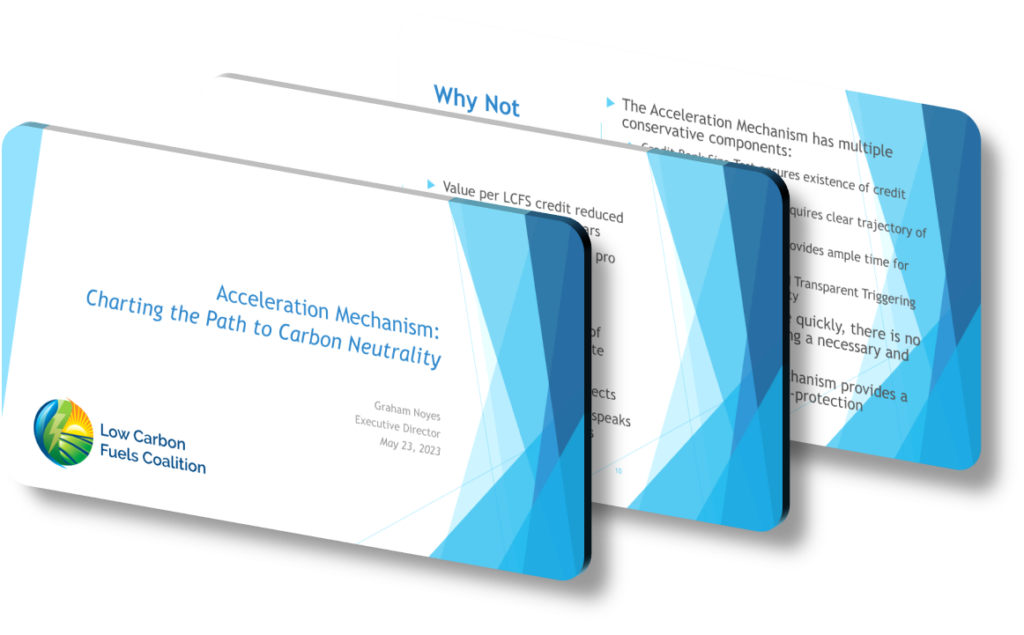

Effective Presentation Structure and Design
The presentation is meticulously structured to guide the audience through the complex landscape of Clean Fuel Standards. It begins with an introduction to the mission and core values of the LCFC, a non-profit organization that unites a diverse membership, including producers, service providers, and market participants. This initial context setting is crucial as it establishes the LCFC’s credibility and the scope of its advocacy.
Following the introduction, Noyes transitions into a detailed discussion of CFS, presenting it as a technology-neutral, science-based, and performance-driven policy. The logical flow of the presentation ensures that each point builds upon the last, creating a cohesive narrative that is easy for the audience to follow.
Compelling Visuals and Messaging
The use of visuals in the presentation is strategic and impactful. Graphs, charts, and infographics vividly illustrate the benefits of CFS crediting across various stakeholders, including liquid and gaseous fuel producers, electricity providers, fleets, and end-users. These visuals not only enhance understanding but also keep the audience engaged, making complex data accessible and relatable.
Moreover, the messaging throughout the presentation is positive and forward-looking. Noyes emphasizes the imperative of decarbonization, framing CFS as a long-term, scalable policy tool that incentivizes carbon performance without bias towards specific technologies. This focus on inclusivity and adaptability is a key strength of the presentation, as it highlights the potential for widespread impact and innovation.
Addressing Challenges and Proposing Solutions
While the presentation acknowledges challenges such as credit price volatility and rulemaking delays, it does not dwell on these issues. Instead, Noyes presents them as opportunities for improvement, advocating for policy recommendations to enhance the effectiveness of CFS. This proactive approach is both refreshing and motivating, encouraging stakeholders to work collaboratively towards solutions.
Conclusion and Call to Action
In the concluding segment, Noyes delivers a compelling call to action, urging the maintenance of momentum in California’s LCFS. He stresses the urgency of climate action and introduces the proposed Acceleration Mechanism as a reliable strategy to ensure continued investment and progress in reducing carbon intensity. This conclusion not only reinforces the presentation’s main themes but also leaves the audience with a sense of purpose and possibility.
Key Takeaway
Graham Noyes’ presentation on Clean Fuel Standards is a standout example of how effective design, structure, visuals, and messaging can deliver a powerful and impactful message. By focusing on the strengths and potential of CFS, Noyes inspires confidence and commitment to the cause of carbon neutrality, making a compelling case for continued action and investment in clean energy solutions.









